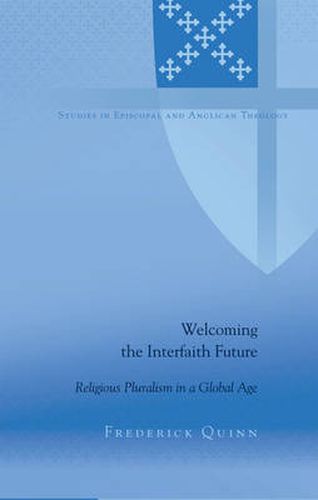Readings Newsletter
Become a Readings Member to make your shopping experience even easier.
Sign in or sign up for free!
You’re not far away from qualifying for FREE standard shipping within Australia
You’ve qualified for FREE standard shipping within Australia
The cart is loading…






This title is printed to order. This book may have been self-published. If so, we cannot guarantee the quality of the content. In the main most books will have gone through the editing process however some may not. We therefore suggest that you be aware of this before ordering this book. If in doubt check either the author or publisher’s details as we are unable to accept any returns unless they are faulty. Please contact us if you have any questions.
Members of many religions live alongside one another in sprawling urban centers and isolated rural communities, and conflict and misunderstanding among religions are widespread. From a Christian and Anglican perspective, this book searchingly examines the nature of such encounters and explores the meaning of religious dialogue and terms like conversion, syncretism, salvation, and pluralism. Tightly focused historical chapters discuss expanding twentieth- and twenty-first-century Catholic and Protestant views about other religions and conclude with a fresh interpretation of the formative Asian contribution to contemporary interfaith encounters. Three established, successful examples of on-the-ground religious interaction are also presented, including the work of Muslim leader Eboo Patel in Chicago, Episcopal Bishop William E. Swing in San Francisco, and Anglican Bishop Tim Stevens in Leicester. Ultimately, interfaith religious dialogue benefits from the prayerful use of visual symbols in addition to written commentaries. Several important, innovative Anglican figures are considered, including Kenneth Cragg, Alan Race, David F. Ford, Keith Ward, Desmond Tutu, Ian S. Markham, and Rowan Williams. The Anglican document Generous Love (1998) is presented as a wider, inclusive discussion of possibilities for interfaith dialogue. The author concludes by reflecting on the importance of the old hymn, There’s a Wideness in God’s Mercy in the evolution of his own views and as a foundational statement welcoming the interfaith future. This book is a solid, lively, and lucid introduction of a volatile issue rippling its way through the contemporary Anglican Communion.
$9.00 standard shipping within Australia
FREE standard shipping within Australia for orders over $100.00
Express & International shipping calculated at checkout
This title is printed to order. This book may have been self-published. If so, we cannot guarantee the quality of the content. In the main most books will have gone through the editing process however some may not. We therefore suggest that you be aware of this before ordering this book. If in doubt check either the author or publisher’s details as we are unable to accept any returns unless they are faulty. Please contact us if you have any questions.
Members of many religions live alongside one another in sprawling urban centers and isolated rural communities, and conflict and misunderstanding among religions are widespread. From a Christian and Anglican perspective, this book searchingly examines the nature of such encounters and explores the meaning of religious dialogue and terms like conversion, syncretism, salvation, and pluralism. Tightly focused historical chapters discuss expanding twentieth- and twenty-first-century Catholic and Protestant views about other religions and conclude with a fresh interpretation of the formative Asian contribution to contemporary interfaith encounters. Three established, successful examples of on-the-ground religious interaction are also presented, including the work of Muslim leader Eboo Patel in Chicago, Episcopal Bishop William E. Swing in San Francisco, and Anglican Bishop Tim Stevens in Leicester. Ultimately, interfaith religious dialogue benefits from the prayerful use of visual symbols in addition to written commentaries. Several important, innovative Anglican figures are considered, including Kenneth Cragg, Alan Race, David F. Ford, Keith Ward, Desmond Tutu, Ian S. Markham, and Rowan Williams. The Anglican document Generous Love (1998) is presented as a wider, inclusive discussion of possibilities for interfaith dialogue. The author concludes by reflecting on the importance of the old hymn, There’s a Wideness in God’s Mercy in the evolution of his own views and as a foundational statement welcoming the interfaith future. This book is a solid, lively, and lucid introduction of a volatile issue rippling its way through the contemporary Anglican Communion.